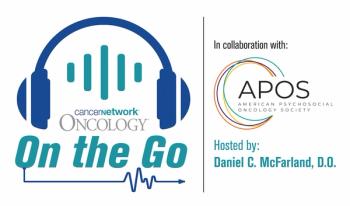
- ONCOLOGY Vol 14 No 2
- Volume 14
- Issue 2
Major Advance in Treating Relapsed Childhood Leukemia
In a significant advance in the treatment of acute childhood lymphoblastic leukemia (ALL), researchers from the Pediatric Oncology Group have found that the use of drugs known to cross into the central nervous system results in high survival rates
In a significant advance in the treatment of acute childhood lymphoblastic leukemia (ALL), researchers from the Pediatric Oncology Group have found that the use of drugs known to cross into the central nervous system results in high survival rates among the 10% of children whose cancer has relapsed and spread to the brain and spinal fluid. This therapy will very likely become standard treatment for ALL patients who experience this kind of relapse, said the studys lead author, Dr. A. Kim Ritchey, of the Pediatric Oncology Group in Chicago. This marks a significant advance in the treatment of children whose disease has relapsed, he said.
High Survival Rate
In one of the largest studies of its kind, 83 children were treated, prior to radiation therapy, with an intensive 6-month cycle of chemotherapeutic drugs known to cross into the central nervous system. The regimen consisted of weekly triple intrathecal therapy with methotrexate, hydrocortisone, and cytarabine in age-adjusted doses, as follows: age 1 and 2 years: methotrexate, 8 mg, hydrocortisone, 8 mg, and cytarabine, 16 mg; age 2 to 3 years: methotrexate, 10 mg, hydrocortisone, 10 mg, and cytarabine, 20 mg; age 3 to 8 years: methotrexate, 12 mg, hydrocortisone, 12 mg, and cytarabine, 24 mg; age ³ 9 years: methotrexate, 15 mg, hydrocortisone, 15 mg, and cytarabine, 30 mg. The strategy produced an overall survival rate of 71%, with patients whose initial remission lasted 18 months or longer achieving a survival rate of 83%.
To treat children enrolled in the study, we specifically picked drugs that not only treated leukemia cells throughout the body, but also got into the brain and spinal cordnot all chemotherapy does, said Dr. Ritchey. After 6 months, the children received radiation to the brain and spinal cord, followed by less intensive chemotherapy for an additional 18 months. By delaying radiation, the children were able to undergo more intensive chemotherapy than had been used in the past, when radiation was given as soon as the relapse was discovered.
Work is still needed to help children with more aggressive disease, said Dr. Ritchey, noting that children who experienced early relapse had a survival rate of only 46%.
Articles in this issue
almost 26 years ago
Damage Control on Pain Controlalmost 26 years ago
IOM Committee Endorses Medicare Reimbursement for Clinical Trialsalmost 26 years ago
FDA Approves Docetaxel for Advanced NSCLCalmost 26 years ago
C. Everett Koop Initiates Online Clinical Trials Info Center for Patientsalmost 26 years ago
Licorice Root Extract Shows Antitumor Activityalmost 26 years ago
Immediate Hormonal Therapy vs Observation in Node-Positive Prostate Canceralmost 26 years ago
UICC International Union Against Cancer Familial Cancer and PreventionNewsletter
Stay up to date on recent advances in the multidisciplinary approach to cancer.





















































































